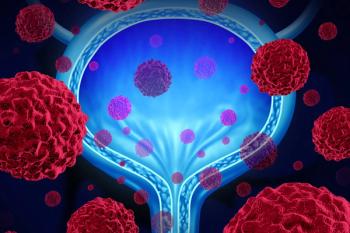
- ONCOLOGY Vol 16 No 9
- Volume 16
- Issue 9
Role of Octreotide in Cancer and Therapy-Related Complications
Octreotide (Sandostatin), a somatostatin analog, has a wide range of uses in the management of cancer patients. It is a unique molecule that specifically binds to somatostatin receptor subtype 2. This property of activating the receptor can result in a multitude of physiologic actions (for example, inhibition of synthesis and release of peptides in endocrine and neoplastic cells, antiangiogenesis, antisecretory effect in the gastrointestinal mucosa, anticholecystokinin activity retarding gallbladder motility, and reduction in splanchnic blood flow). In addition, in vitro experiments confirm that octreotide has cytostatic activity against a variety of malignancies. Octreotide is now widely used in the treatment of hormonal syndromes that result from a variety of neuroendocrine and endocrine neoplasms. Its dramatic effect in controlling malignant carcinoid syndrome and hormone-induced diarrhea (for example, from gastrinoma and VIPoma) has been well documented. However, the chronic use of octreotide can result in steatorrhea and gallstone formation.
Octreotide (Sandostatin), a somatostatin analog, has a wide range of uses inthe management of cancer patients. It is a unique molecule that specifically binds to somatostatin receptor subtype 2. This property of activating thereceptor can result in a multitude of physiologic actions (for example,inhibition of synthesis and release of peptides in endocrine and neoplasticcells, antiangiogenesis, antisecretory effect in the gastrointestinal mucosa,anticholecystokinin activity retarding gallbladder motility, and reduction insplanchnic blood flow). In addition, in vitro experiments confirm thatoctreotide has cytostatic activity against a variety of malignancies. Octreotideis now widely used in the treatment of hormonal syndromes that result from avariety of neuroendocrine and endocrine neoplasms. Its dramatic effect incontrolling malignant carcinoid syndrome and hormone-induced diarrhea (forexample, from gastrinoma and VIPoma) has been well documented. However, thechronic use of octreotide can result in steatorrhea and gallstone formation.
Radiolabeled octreotide has been used successfully for imaging (neuroendocrine,endocrine, breast, small-cell lung, and prostate cancers) and more recently fortargeted radiotherapy. It is also an effective agent for the control oftherapy-induced diarrhea refractory to oral therapy. Could this molecule have anexpanded role in cancer research? A 2-day meeting of investigators familiar withoctreotide research was held in April 2002 to discuss this question. This was afrank, interactive forum reviewing new data on octreotide and the long-actingrelease (LAR) formulation, octreotide LAR depot, to determine its future inresearch.
There were four main areas of discussion: (1) neuroendocrineneoplasms, (2) therapy-induced diarrhea (chemotherapy and radiotherapy), (3)review of potential research in pancreatic, hepatocellular, and prostatecancers, and (4) exploitation of novel properties of this molecule (antiangiogenicproperty).
In this supplement,
Finally,
In summary, the conference proved very productive in reviewingthe current information on octreotide in cancer and therapy-inducedcomplications. More importantly, we could determine and rank new researchdirections. Several potential study designs were reviewed and discussed frankly.We hope to revisit these and other topics annually.
Articles in this issue
about 23 years ago
The Molecular Basis of Cancer, 2nd Editionabout 23 years ago
Management of Anemia in Patients With Cancerabout 23 years ago
Commonly Used Quality of Life and Symptom Measurement Scalesabout 23 years ago
Iron and the Anemia of Chronic Diseaseabout 23 years ago
Diagnosis and Management of Aplastic Anemia and Myelodysplastic Syndromeabout 23 years ago
Recombinant Human Erythropoietin in Cancer-Related Anemiaabout 23 years ago
When Is it Justified to Treat Symptoms? Measuring Symptom BurdenNewsletter
Stay up to date on recent advances in the multidisciplinary approach to cancer.


















































































